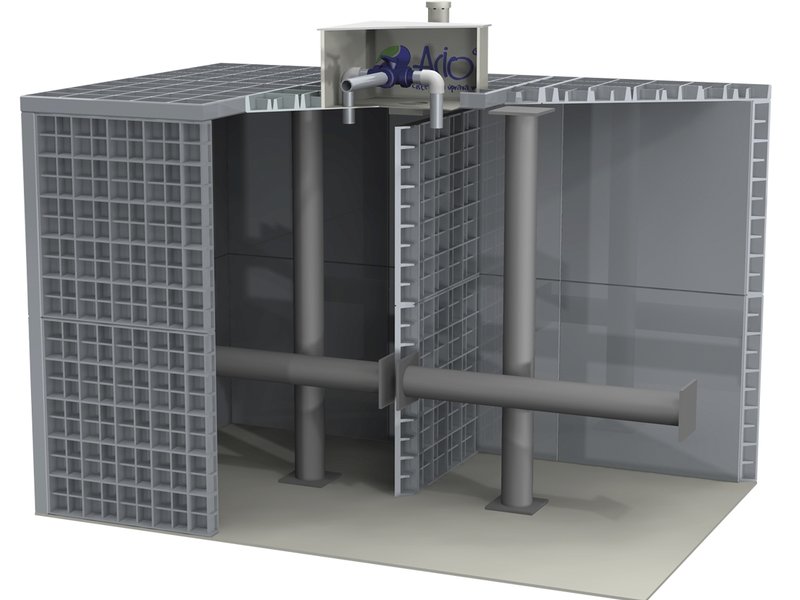Even though urine frequently denoted in the wastewater treatment business as “yellow water” accounts for only 1% of the total volume of household wastewater, its is a source of almost 80% of nitrogen and at least 50% of phosphorus out of the total quantity of nutrients occurring in municipal wastewater.
The re-use of these nutrients is very important. For instance, it is assumed that phosphorus resources will be depleted in 30 to 50 years and nothing else could replace it in its role in the agricultural sector (2). Then we will have to start with its recycling in order to prevent the forecasted world food crisis.
At the level of households, waterless (no-flush)
urinals and toilets
can be used. They enable separation, collection and removal of urine with the aim of using it as a fertiliser in agriculture. At the same time, it is possible to eliminate eutrophication of surface waters. It is known that a man produces about 500 litres of urine per year (depending on local conditions).
True, 95% of urine is water but remaining 5% consists of macronutrients, well known to all gardeners. They contain nitrogen (N), phosphorus (P), and potassium (K) and in addition, urine contains some importance trace elements. Their actual content differs depending on the relevant diet. Therefore, it can be confirmed that urine is usually a well-balanced fertiliser produced directly from the human body. An average individual produces sufficient quantities of urine to fertilise about 300 to 400 m
2
of top soil with the application rate of 50 to 100 kg of nitrogen (N) per hectare.
Reasons for urine separation procedures
The basic reasons for separation and cleaning of yellow water in the European countries are as follows:
-
reduction of the nutrient concentration in wastewater as regards eutrophication of surface waters,
-
minimisation of drained nutrient quantities and reduction in the nitrogen content will decrease the costs of wastewater treatment,
-
unloading of inlet parameter at the entry to wastewater treatment plant, due to which it is possible to consider other, less financially demanding processes for wastewater treatment plants, e.g. in household units,
-
the nutrients recycled from urine and converted to fertilisers – as the phosphorus resources are being depleted, the prices of phosphate and nitrate fertiliser are rising, and
-
the obtained fertilisers have well-known composition and it is directly applicable (only dilution with water is needed).
Once urine is separated, what to do next?
A four-membered family produced every year an equivalent of a 50 kg bag of the NPK fertiliser (ratio 10:1:4) from urine. This means that the nitrogen content is even higher than in may other artificial fertilizers. Another positive effect is that this fertiliser contains phosphorus in a form easily accessible to the plants. The nutrient concentration in urine can be diluted according to practical needs. Before the urine fertiliser is used, the following steps should be taken:
1. Separated urine can be stored in underground tanks. They are designed as double-chamber tanks with stench traps. Once a single chamber is full, the ¨second one will start to be filled.
2. The double-chamber tanks are used because of urine stabilisation purposes. Healthy man urine should not contain pathogenic microorganisms; however, the relevant WHO Handbook for handling yellow water recommends four month stabilisation.
3. The urine treated in this way should be consequently (according to WHO) diluted for its application with water in 1:3 ratio (if noflush urinal are used). The water urine mixture will be automatically mixed in an ejector and then applied to non leafy vegetables twice a week.
4. The urine application after a short storage time can be possible in small farms. Contaminating substances will decompose by aerobic soil microorganisms and solar UV radiation significantly quicker. Therefore, the storage tanks are recommended for rather large communities.
